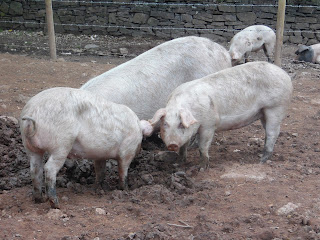Now the assignment a business on
a shoestring has come to an end, I think this may not the end of the blog. I
did state somewhere earlier within this new found technology, that I was not so
sure how it would work out. Well I have to say I quite enjoy putting imagery
thoughts and processes down in this format.
The reason of this new entry is
due to today's trip to London. I visited the fashion and Textile Museum to view
an exhibition of liberties prints. Which I found extremely interesting to see
how their fabrics have developed over the years.
Not only was a very interesting
to see a large range of garments spanning the timeline of liberties itself. It
was also extremely interesting for me to see some original painted designs as
well as the way that liberties have developed these designs into such things as
furnishing fabrics, dress fabrics as well as head scarves amongst other things.
However, this is not the main
reason for this new entry. On a trip down the Kings Road and a visit to a
fashion and home furnishing emporium called "Anthropologie" I found
in an area within the front of the shop usually part of the shop floor. A small
interesting exhibition of Louise Gardiner's fabulous embroidery work. I
initially planned to research in-depth Louise is work in relation to the
business on a shoestring assignment. There is a small section within the
assignment proposal however this does not do Louise's work justice.
When I originally came across
Louise's work I felt that the images I had were to small to work from. I did
come across Louise's work again when a post came up on my Facebook page.
Images from Sue Hotchkis Facebook post
From Sue Hotchkis Textile Artist
10 December 2015 ·
I went to #AnthroKingsRoad
#London this week & met @LoulouGardiner
Beautiful#Embroidery well worth a visit.
Her work is there until the 31st January in the Anthropologie Gallery 131-141
Kings Road
at the time I thought this is the
lady I've looked into wow how beautiful must get onto this after finishing
working on Richard box. However, this did not happen!
What a mistake I made,
looking at
Louise's work close-up it meets all the needs stated within the assignment
proposal. The work produced shows extreme patients and amazing talent. As with
the work of Claire Heathcote, Louise leaves threads hanging within her work.
The time it must take Louise to
produce these works of art, the attention to detail is stunning.
If I had the time to develop
sampling based on Louise's work, I do feel that I would not have produced any
work at all sell. May be it was meant to be that I did not get to see Louise's
work saw close-up until this time. It would have taken my work in a completely
different direction however I don't think I would have met any of the criteria
of the assignment if I pursued this.
Here are some of the images I took today within the exhibition space.





































